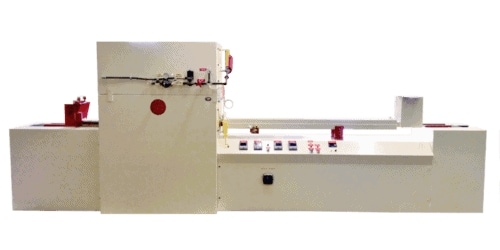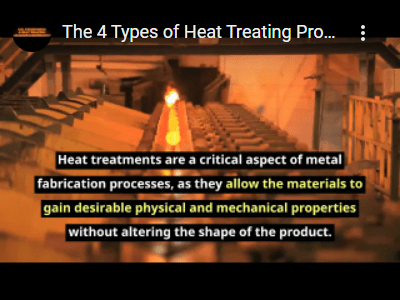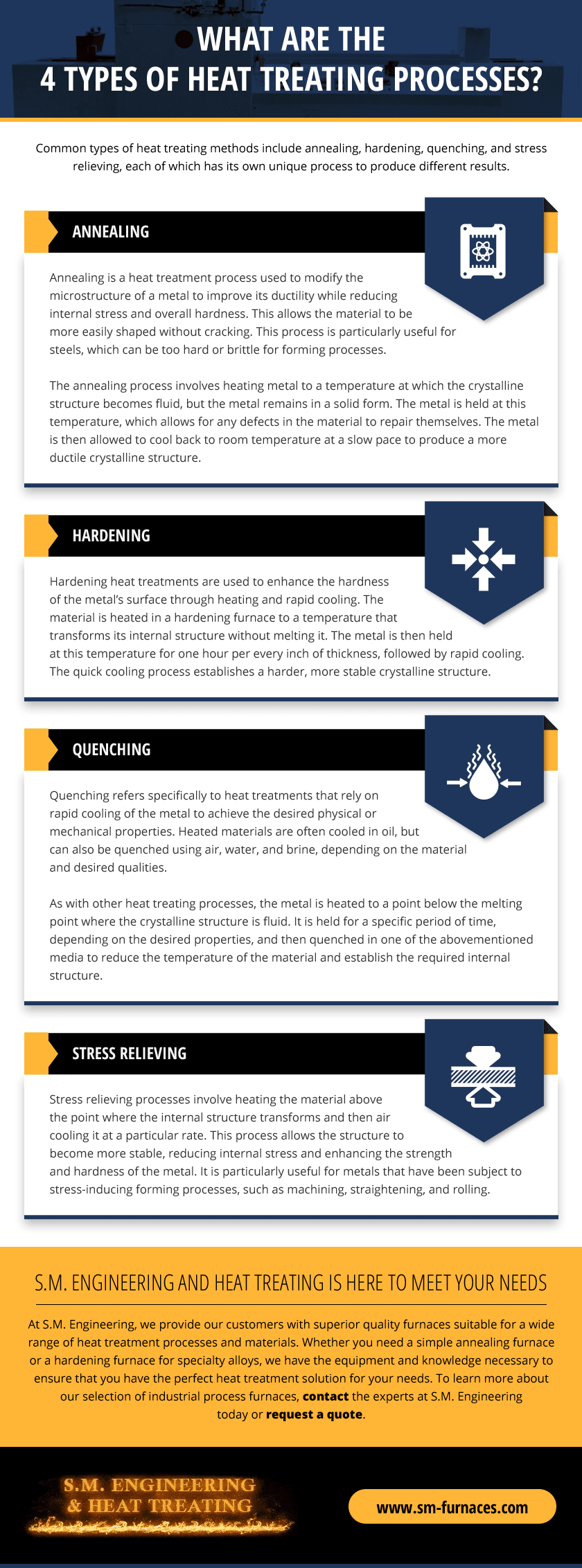Heat treatment is a process that uses controlled heating and cooling to modify the crystalline structure of metals and metal alloys. Depending on the material and treatment process, heat treating can provide numerous benefits, including enhanced hardness, increased temperature resistance, greater ductility, and improved material strength. Heat treatments are a critical aspect of metal fabrication processes, as they allow the materials to gain desirable physical and mechanical properties without altering the shape of the product.
S.M. Engineering & Heat Treating is pleased to offer a variety of furnaces for use in an extensive range of heat treatments, including annealing, hardening, quenching, and stress relieving. Our world-class annealing and heat treatment furnaces feature atmosphere conserving configurations, cutting-edge digital microprocessors, and a variety of low dew point designs perfect for numerous metal heat treatment processes.
What are the 4 Types of Heat Treating Processes?
Common types of heat treating methods include annealing, hardening, quenching, and stress relieving, each of which has its own unique process to produce different results.
Annealing

Annealing is a heat treatment process used to modify the microstructure of a metal to improve its ductility while reducing internal stress and overall hardness. This allows the material to be more easily shaped without cracking. This process is particularly useful for steels, which can be too hard or brittle for forming processes.
The annealing process involves heating metal to a temperature at which the crystalline structure becomes fluid, but the metal remains in a solid form. The metal is held at this temperature, which allows for any defects in the material to repair themselves. The metal is then allowed to cool back to room temperature at a slow pace to produce a more ductile crystalline structure.
Hardening
Hardening heat treatments are used to enhance the hardness of the metal’s surface through heating and rapid cooling. The material is heated in a hardening furnace to a temperature that transforms its internal structure without melting it. The metal is then held at this temperature for one hour per every inch of thickness, followed by rapid cooling. The quick cooling process establishes a harder, more stable crystalline structure.
Quenching
Quenching refers specifically to heat treatments that rely on rapid cooling of the metal to achieve the desired physical or mechanical properties. Heated materials are often cooled in oil, but can also be quenched using air, water, and brine, depending on the material and desired qualities.
As with other heat treating processes, the metal is heated to a point below the melting point where the crystalline structure is fluid. It is held for a specific period of time, depending on the desired properties, and then quenched in one of the abovementioned media to reduce the temperature of the material and establish the required internal structure.
Stress Relieving
Stress relieving processes involve heating the material above the point where the internal structure transforms and then air cooling it at a particular rate. This process allows the structure to become more stable, reducing internal stress and enhancing the strength and hardness of the metal. It is particularly useful for metals that have been subject to stress-inducing forming processes, such as machining, straightening, and rolling.
S.M. Engineering & Heat Treating is Here to Meet Your Needs
At S.M. Engineering & Heat Treating, we provide our customers with superior quality furnaces suitable for a wide range of heat treatment processes and materials. Whether you need a simple annealing furnace or a hardening furnace for specialty alloys, we have the equipment and knowledge necessary to ensure that you have the perfect heat treatment solution for your needs. To learn more about our selection of industrial process furnaces, contact the experts at S.M. Engineering & Heat Treating today or request a quote.


